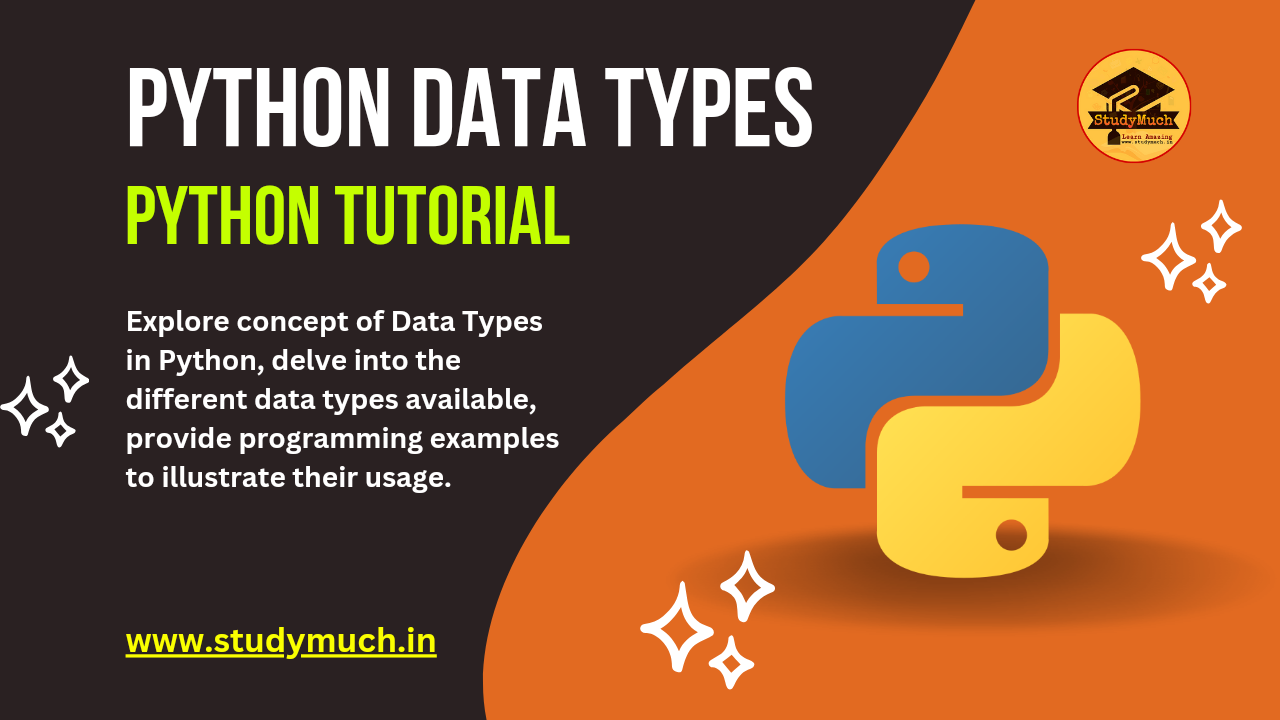Python Data Types

Python Data Types: A Comprehensive Guide
Python, a versatile and powerful programming language, offers a wide range of built-in data types that enable developers to manipulate and store various kinds of information. In this blog post, we’ll explore the concept of data types in Python, delve into the different types available, and provide programming examples to illustrate their usage.
What are Data Types?
Data types are fundamental classifications of values in programming that determine the type of operations that can be performed on them. Python, being dynamically typed, allows you to define variables without specifying their type explicitly. The interpreter automatically determines the data type based on the assigned value.

Python’s built-in data types can be broadly categorized into the following groups:
1. Numeric Types:
a. Integers (int):
Integers represent whole numbers without fractional components. They can be positive, negative, or zero. Python supports arbitrary-precision integers.
Example:
a = 10 b = 15 print (a + b)
b. Floating-Point Numbers (float):
Floating-point numbers represent real numbers with a decimal point. They are used to represent values with fractional components.
Example:
x = 1.12 yz = 15.356 print (x + yz)
c. Complex Numbers (complex):
Complex numbers consist of a real part and an imaginary part. They are represented as real + imaginaryj.
Example:
z = 2 + 3j print(z)
2. Text Type:
Strings (str):
Strings represent sequences of characters enclosed in single or double quotes. They are used to work with textual data.
Example;
message = "Hello, Python!" print(message)
3. Sequence Types:
a. Lists (list):
Lists are ordered collections of items. They can contain elements of different data types and are mutable, meaning their contents can be modified.
Example:
fruits = ["apple", "banana", "orange"] print(fruits)
b. Tuples (tuple):
Tuples are similar to lists but are immutable, meaning their contents cannot be changed after creation.
Example:
point = (2, 3) print(point)
c. Range (range):
Ranges represent sequences of numbers and are often used for iterating over a range of values.
Example:
numbers = range (1,6) print(numbers)
4. Mapping Type:
Dictionaries (dict):
Dictionaries are collections of key-value pairs. They allow you to store and retrieve values based on their associated keys.
Example:
person = {"name": "Alice", "age": 30, "city": "New York"} print(person)
5. Set Types:
Sets (set):
Sets are unordered collections of unique elements. They are useful for tasks involving membership tests and eliminating duplicates.
Example:
colors = {"red", "green", "blue"} print(colors)
Frozensets (frozenset):
Frozensets are immutable versions of sets.
Example:
immutable_colors = frozenset(["red", "green", "blue"]) print(immutable_colors)
6. Boolean Type:
Boolean (bool):
Boolean values represent truth (True) or falsehood (False). They are essential for making logical decisions.
Example:
is_active = True has_permission = False
7. Binary Types:
a. Bytes (bytes):
Bytes represent sequences of bytes. They are immutable and often used to handle binary data.
Example:
binary_data = b'\x48\x65\x6c\x6c\x6f' print(binary_data)
b. Byte Arrays (bytearray):
Byte arrays are mutable versions of bytes.
Example:
mutable_binary_data = bytearray([72, 101, 108, 108, 111]) print(mutable_binary_data)
Conclusion:
In this comprehensive guide, we’ve explored the various data types that Python offers. From numeric types
to sequences, mappings, sets, and more, these data types enable you to manipulate and represent diverse kinds of information in your programs. Understanding these data types is crucial for effective programming, as it allows you to write more robust and efficient code. Whether you’re handling numbers, text, collections, or binary data, Python’s rich set of data types equips you with the tools you need to create powerful and versatile applications.
Learn Also;



0 Comments